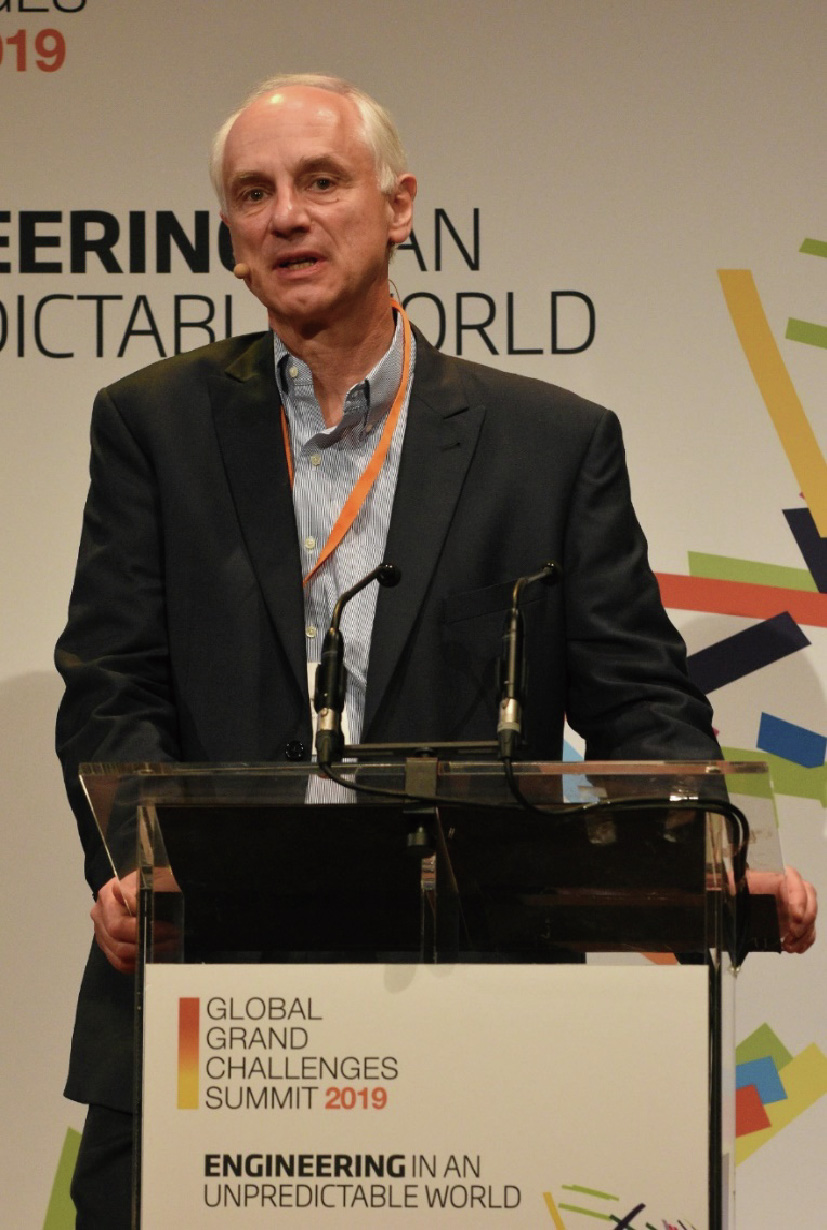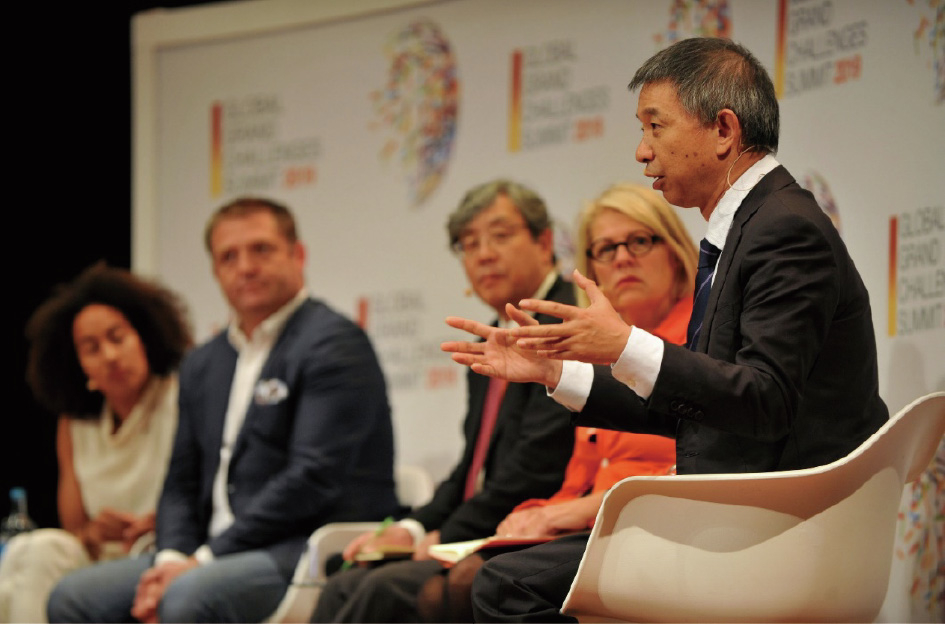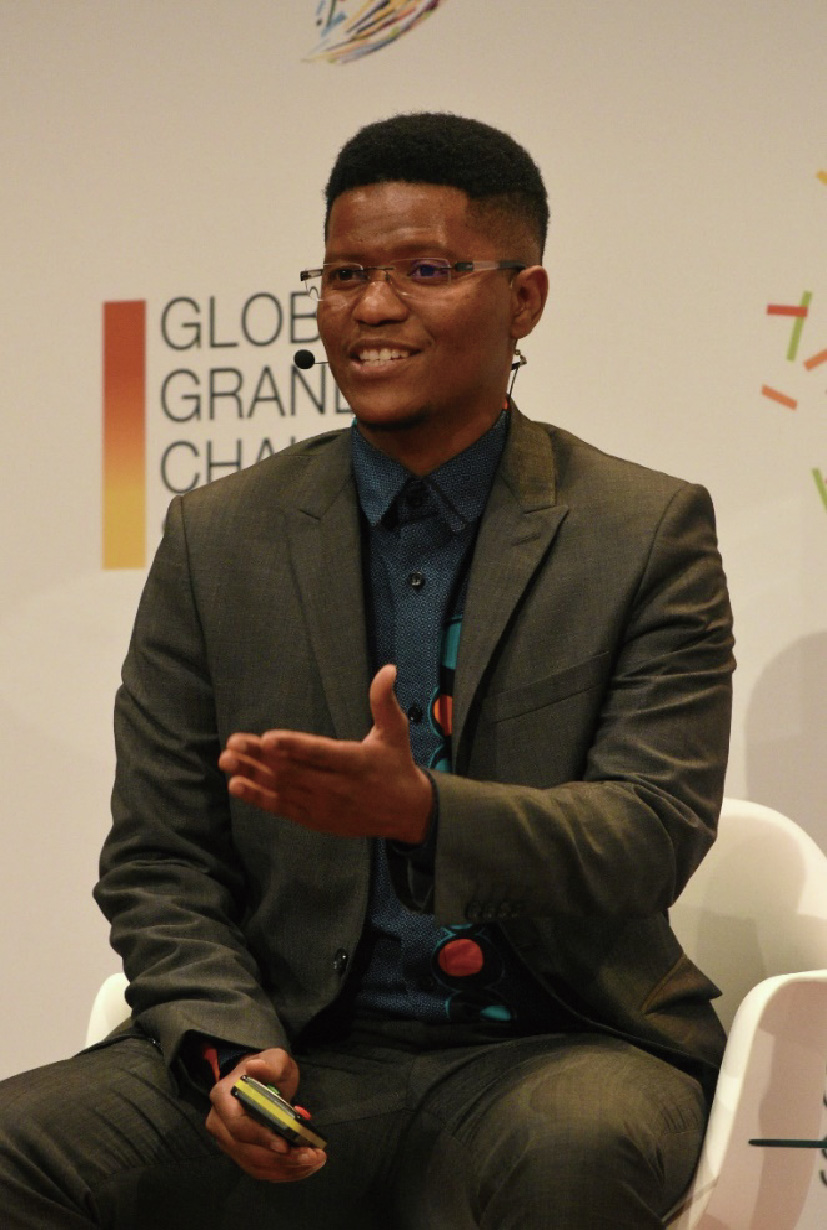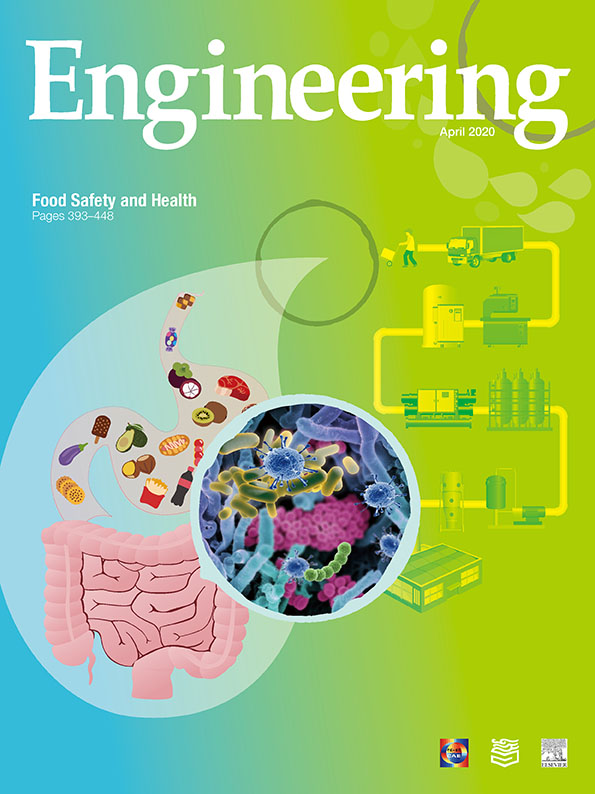The future human experience in 2050 might be broadly summed up in three words: crowded, urban, hot. At the century’s midpoint, the global population will be pushing an unprecedented ten billion, mostly living in cities, and climate change—if left unchecked—will be unescapably present [1,2].
How will we sustain ten billion people in such a world, and what role will engineers play? These were the questions explored on day two of the Global Grand Challenges Summit (GGCS) 2019, hosted by the Royal Academy of Engineering (RAE), which ran from 16 to 18 September in London [3,4].
The first panel session of the day addressed the question of how engineering can reduce the risks of climate change. One stand-out speaker was Klaus Lackner (Fig. 1), who directs Arizona State University’s Center for Negative Carbon Emissions, located in Tempe, Arizona. He summarised the growing crisis of carbon dioxide build-up in the atmosphere and argued persuasively for the need to adopt technology to remove carbon from the air. "We have an excess carbon problem. We like to phrase this as a mitigation problem—and maybe we should behave well and use less energy—but deep down I think it is a waste-management problem,” said Lackner. "We have to clean up all the 'litter' we have already put out.”
《Fig.1》

Fig. 1. While sounding the alarm over the excess carbon dioxide in the atmosphere, Professor Klaus Lackner, director of the Arizona State University's Center for Negative Carbon Emissions in Tempe, Arizona, was optimistic that carbon-capture technology, sufficiently developed and scaled up, could become a cost-efficient solution. Credit: Rob Lacey, with permission.
Lackner described a carbon capture system, called mechanical trees (Fig. 2), developed with colleagues at Arizona State University and now being trialed under license by Silicon Kingdom Holdings of Dublin, Ireland [5]. The technology is proven, Lackner said. "The question is, can you get the price down from $500 USD per tonne of extracted carbon, where people are today, to the $100 USD a tonne we aim for in the short term, and ultimately to $30 a tonne, which would add about six or seven cents to a liter of gasoline.”
《Fig.2》

Fig. 2. Will our future landscapes be home to forests of "mechanical trees,” like this artist’s conception, that passively remove carbon from the air and enable its conversion into something useful, such as fuel? Credit: Arizona State University, with permission.
In the same panel, Professor Jianyun Zhang, president of Nanjing Hydraulic Research Institute, described the various measures Chinese engineers are taking to mitigate the effects of a dramatic reduction in river flow in China over recent decades. These measures include the megaproject that is diverting water from rivers in the south to the particularly water-stressed north of the country. Climate change may be exacerbating the country's water shortage, but the demands of China’s enormous population and industries are among the main causes of the depletion of its rivers [6].
The following session addressed the cities of the future and the challenge of creating sustainable living places for ten billion people. The United Nations predicts that two-thirds of the world's people will be living in urban centers by 2050, making urban sustainability a critical issue. Dr. Jian Wang (Fig. 3), chairman of the Alibaba Group Technology Committee, described the development of Alibaba’s City Brain initiative in Hangzhou, China. The project looks at collection of city data as a resource to be used to boost effi- ciency, save time, and preserve natural resources. He gave the example of using real-time traffic data in Hangzhou to optimize traffic flow and minimize congestion. In 2015, Hangzhou was the 30th most congested city in the world, according to navigation firm Tomtom's global congestion rankings. By 2018, with City Brain interventions in place, it ranked 143rd [7]. Wang said he is also keen to see how the City Brain technology can help to save water.
《Fig.3》

Fig. 3. Dr. Jian Wang, founder of Alibaba Cloud, describes how Alibaba's City Brain project is being used to optimize urban public resources in Hangzhou, China. Credit: Rob Lacey, with permission.
In the same session, Peter Lacy, a senior managing director at Accenture Strategy, based in London, spoke about the importance of cities embracing the so-called "circular economy”. "At its most basic, it is a simple shift away from a linear logic that has driven the economy since the industrial revolution: take, make, waste,” said Lacy. "Changing that mindset—and that relationship—between our urban environment and natural resources, means thinking in cycles of take make, take make, take make, in order to produce enough for all, forever. We believe it is an enormous economic opportunity for new business models, services, and thinking.”
The final panel session of the day looked at the prospects for sustaining a healthy future population of ten billion, and was moderated by Dr. Loubna Bouarfa, founder and CEO of Okra Technologies, based in Cambridge, UK, which develops artificial intelligence tools designed to help pharmaceutical companies, regulators, and healthcare practitioners connect patients with the most appropriate drugs. Providing effective healthcare in the future comes down to two core ideas, Bouarfa said. "We need to be able to encourage innovation, applying ideas for new technology to solve the problems that will arise from an increased population size. Additionally, we will need legislation that is both strong enough to protect data privacy but also flexible enough to not stifle innovation.”
Another panellist, Neo Hutiri (Fig. 4), founder of Technovera in Johannesburg, South Africa, helps patients connect with their medicine more directly. Diagnosed with tuberculosis in 2014, Hutiri had to go to a clinic every month to collect his medicine, becoming one of the many South Africans receiving long-term treatment for chronic conditions who, due to a widespread shortage of healthcare professionals, often have to wait several hours simply to pick up their drugs. His experience inspired him to invent the Pelebox Smart Locker (Fig. 5). The principle is simple: Once installed in a clinic or commuter hubs, the lockers are regularly stocked by a pharmacist. When your medicine is placed in a locker, you receive a text message including a unique code which will open the appropriate locker when you arrive to pick up your treatment. The hours of waiting are eliminated.
《Fig.4》

Fig. 4. Neo Hutiri, founder of Technovera in Johannesburg, South Africa, recalls how contracting tuberculosis exposed him to punishing waiting times when picking up his medicine, inspiring him to create a technical solution, called Pelebox. Credit: Rob Lacey, with permission.
《Fig.5》

Fig. 5. The Pelebox Smart Locker alerts patients that their medicine is ready for collection via a text message. The system enables patients with chronic conditions to pick up their regular medicine in minutes instead of waiting hours for overstretched healthcare staff to dispense it. Credit: Technovera Pty Ltd., with permission.
With about three million patients receiving treatment for HIV, the South African antiretroviral treatment programme is the largest in the world [8]. Solutions like Pelebox, which can efficiently deliver crucial drugs to patients with chronic conditions, can help to maintain adherence to long-term drug regimens, and save patients substantial time. The Pelebox won Hutiri the RAE's 2019 Africa Prize for Engineering Innovation. "This Summit is the best platform to meet other engineers from different parts of the world solving other social challenges,” said Hutiri. "It is a great way to expand one's mind, build global networks, and, more importantly, inspire others to take action.”
The final session of the Summit generated inspiration courtesy of engineer—and inventor of the Segway—Dean Kamen, the founder and CEO of Deka Research & Development, based in Manchester, New Hampshire. Kamen spoke about the growth of For Inspiration and Recognition of Science and Technology (FIRST), a charity he co-founded in 1989 that aims to encourage students— from 6 to 18 years of age, in four age groups—to become future leaders in science and technology through a range of robotics based leagues and competitions. FIRST Global, founded by Kamen in 2016 as an expansion of FIRST, runs an annual international "robotics Olympics” called the FIRST Global Challenge. The 2019 competition, which took place in Dubai in October, included student teams from 191 nations. Kamen concluded with a call for engineers to boost their visibility and reach out to younger generations, whose engagement will be essential to meeting the long-term global challenges ahead: "We have to have a voice. We have to compete for the hearts and minds of kids.”
Dr. Hayaatun Sillem CBE, CEO of the Royal Academy of Engineering, reflected on day two of the Summit: "It was inspiring to see engineers from academia and business from the United States, the United Kingdom, and China on the same stage having a serious discussion on issues such as global sustainability. While there were differences in approaches and emphasis, there was extremely strong agreement on the scale of the challenges that we face and the need for international, interdisciplinary, and intergenerational collaboration to reach solutions.”













 京公网安备 11010502051620号
京公网安备 11010502051620号




